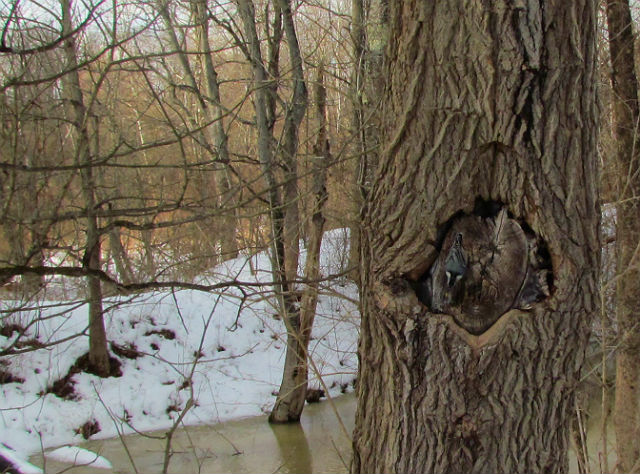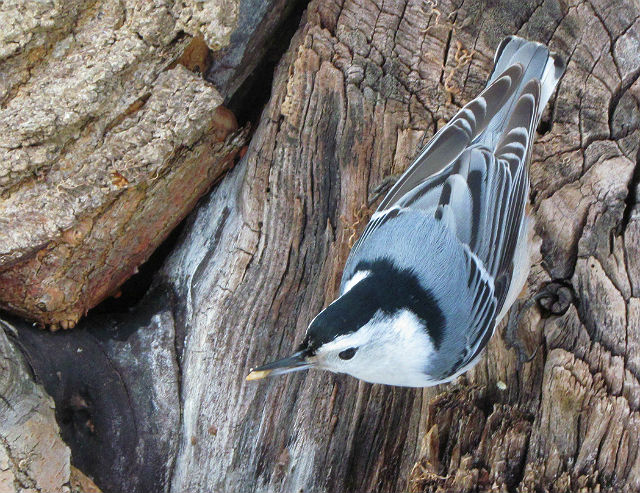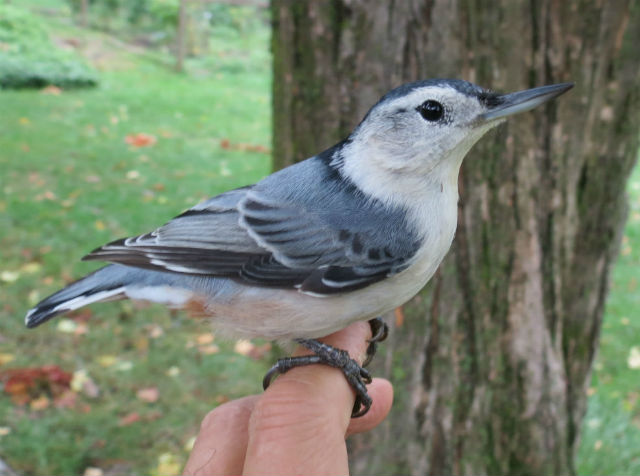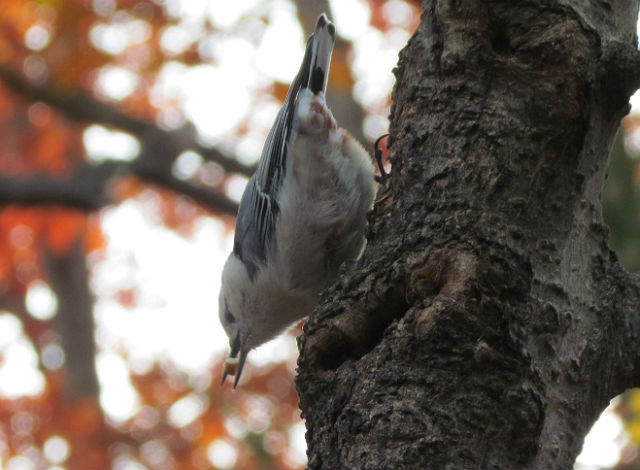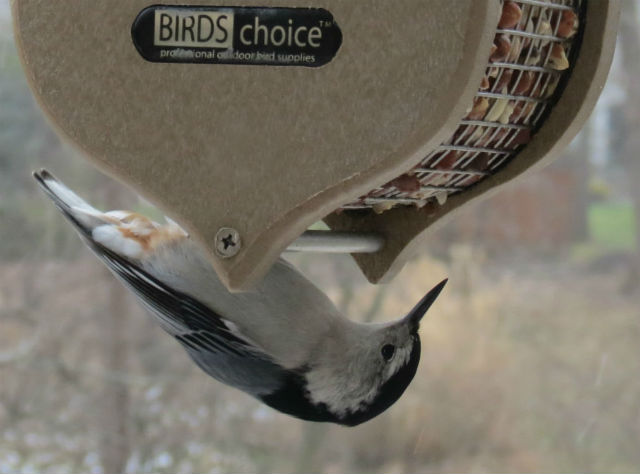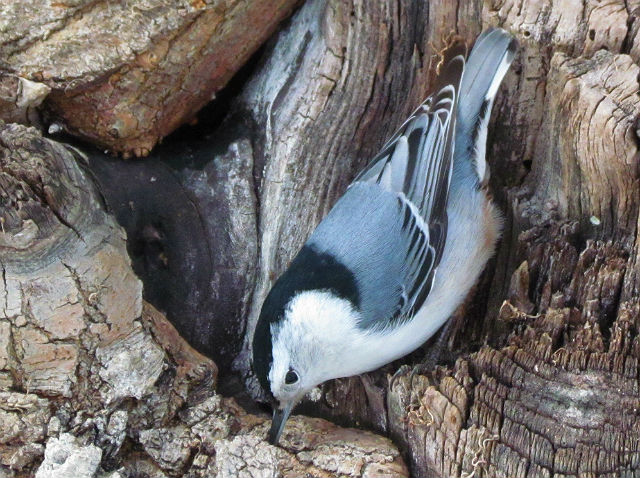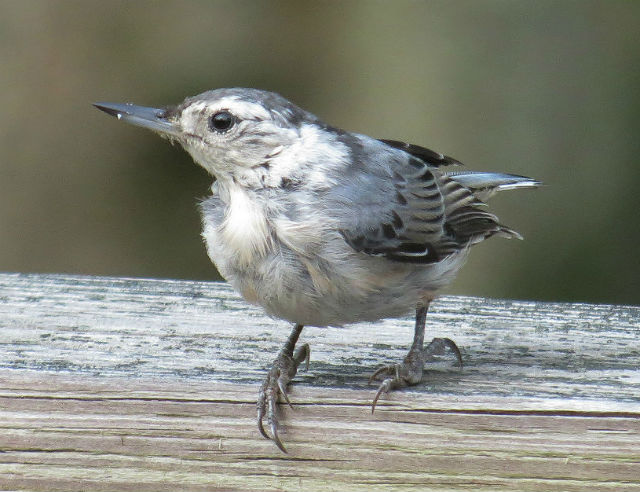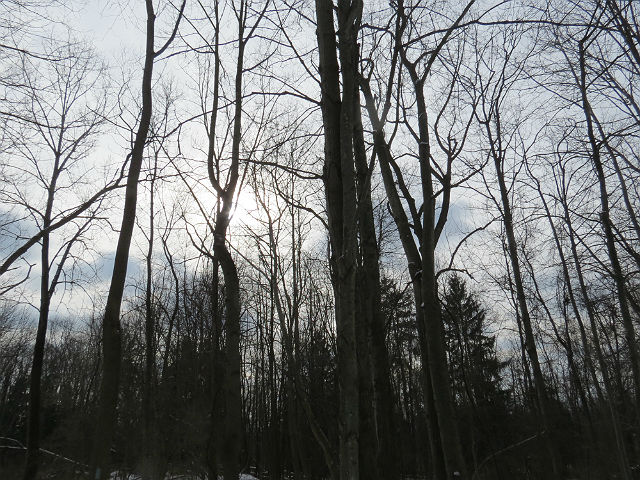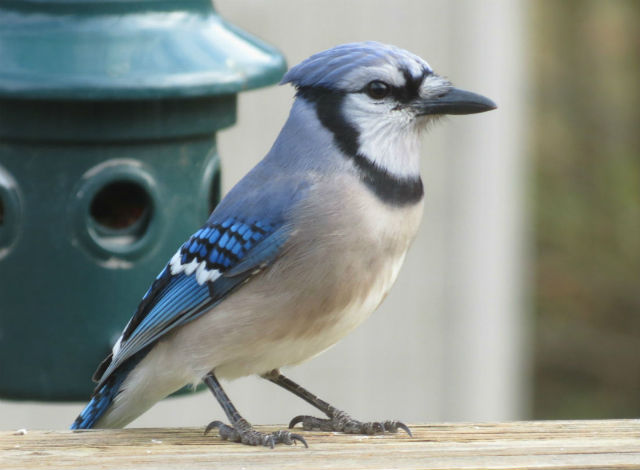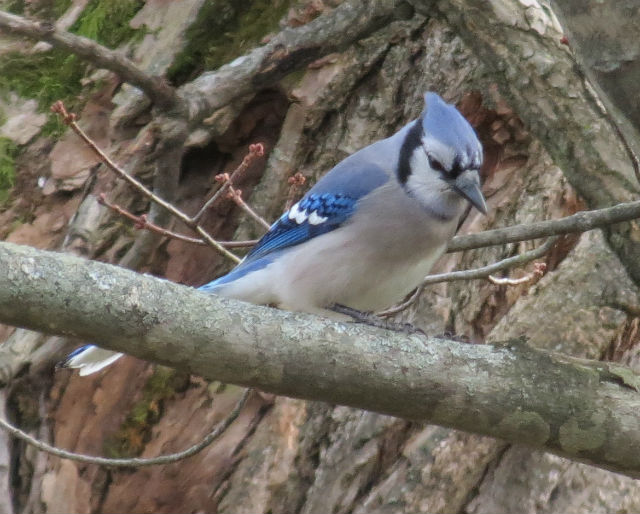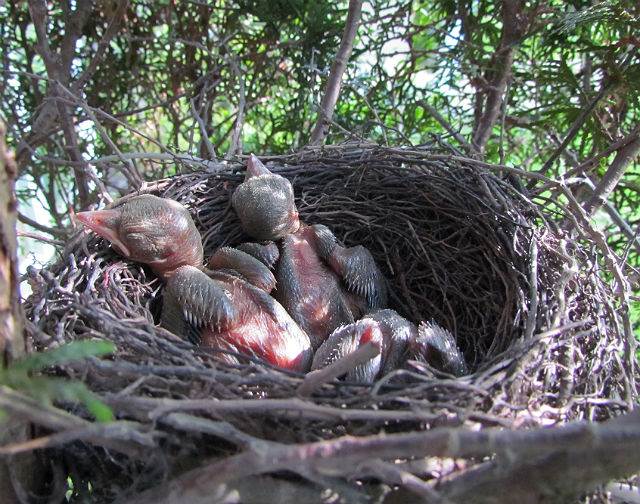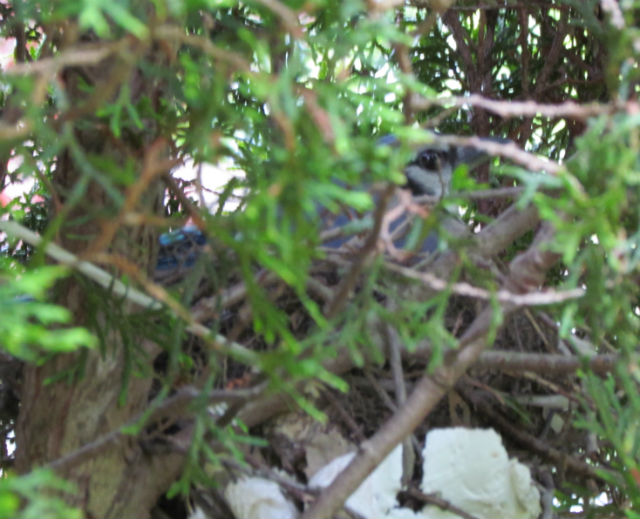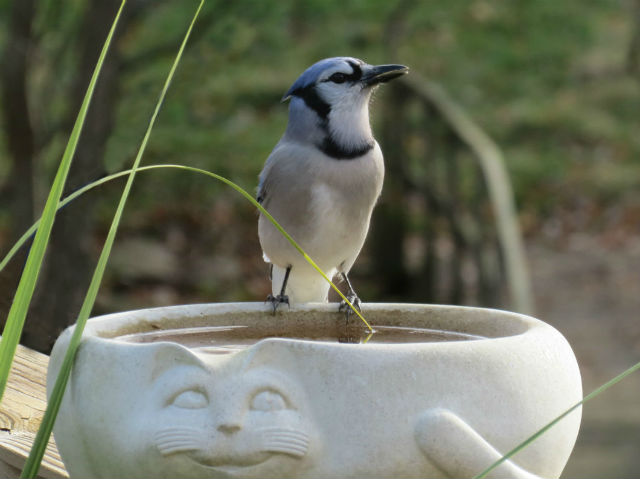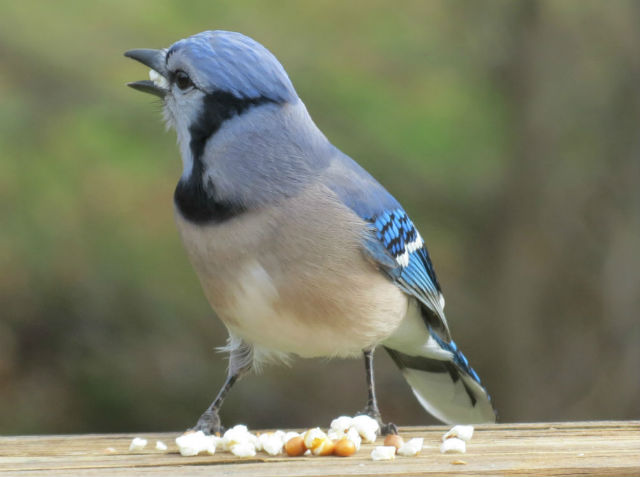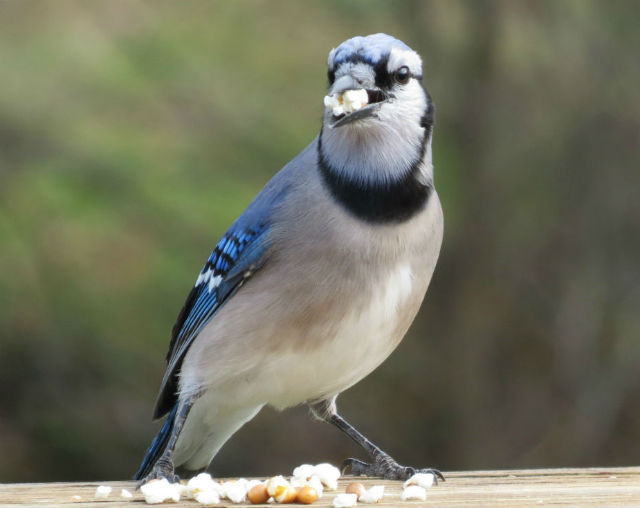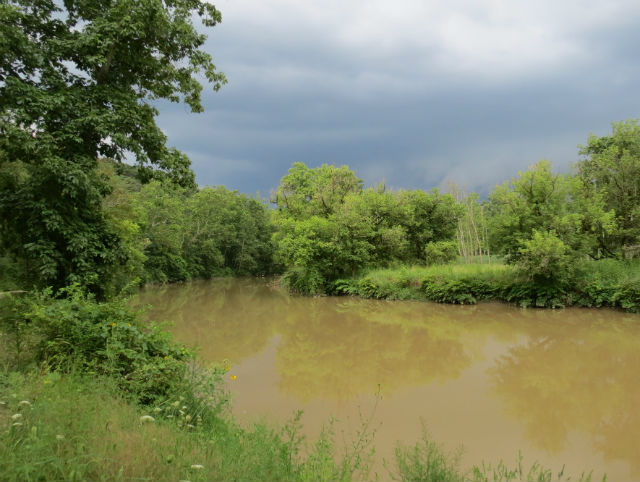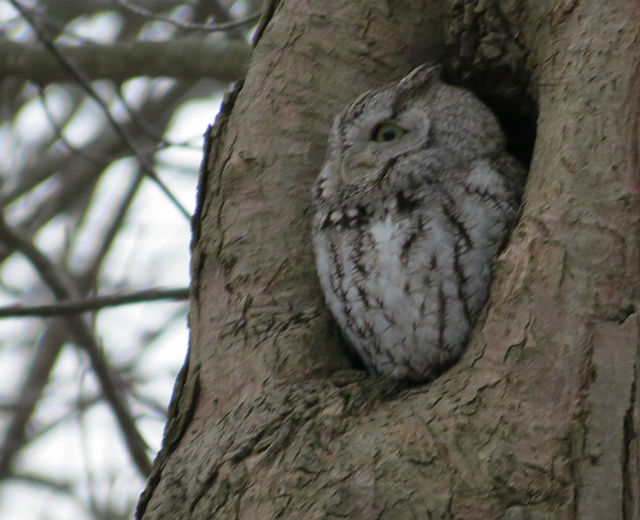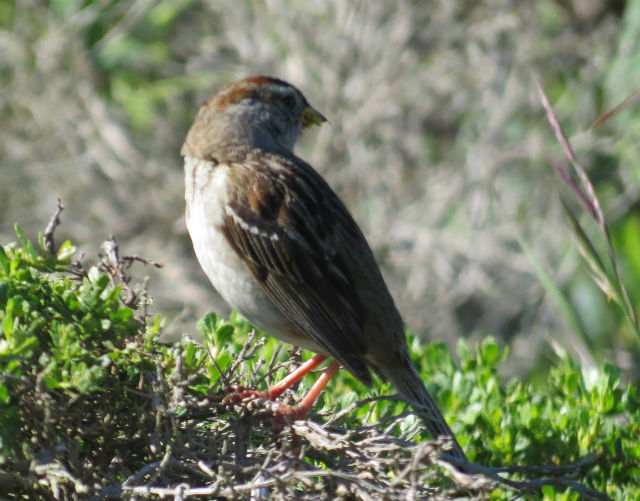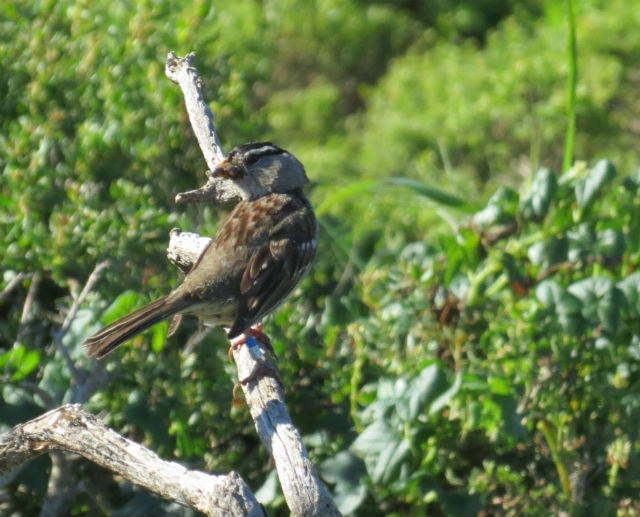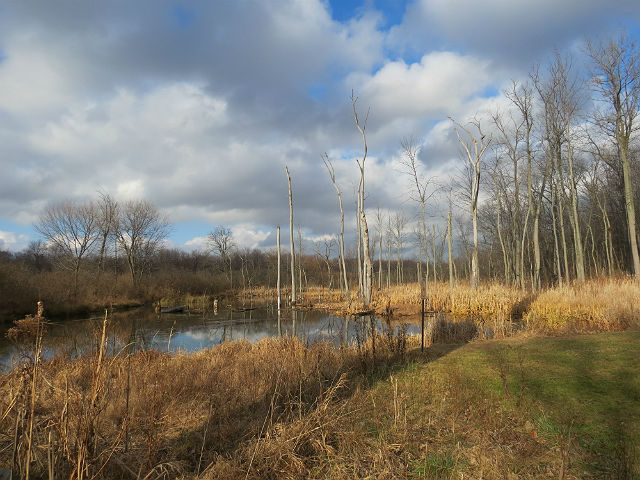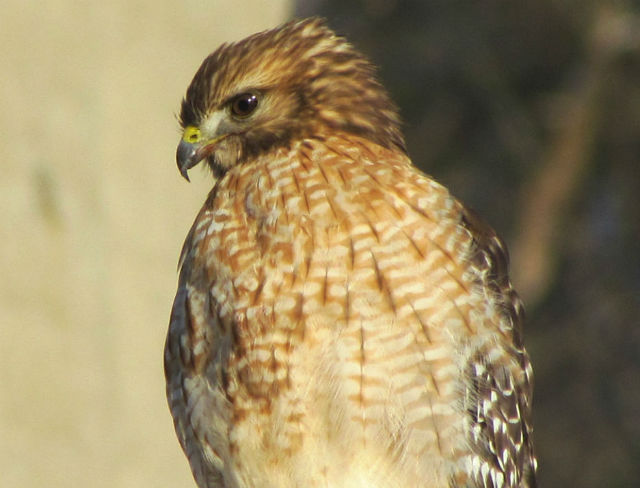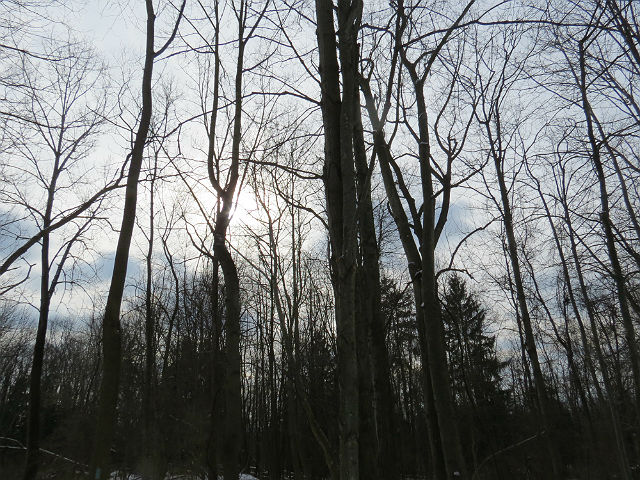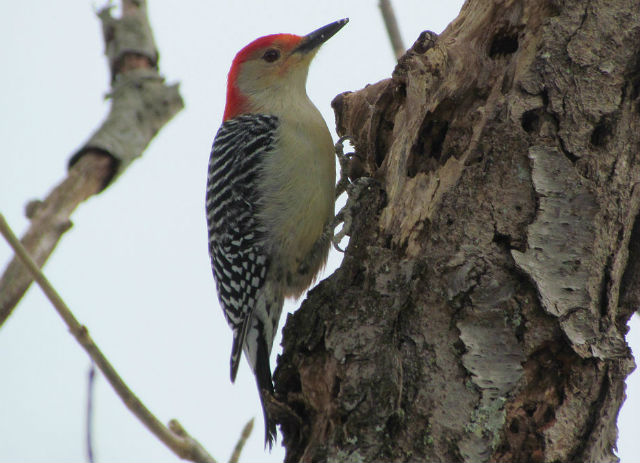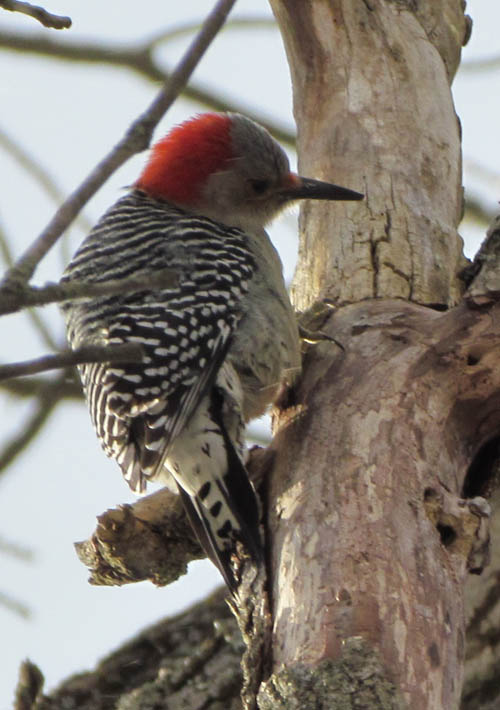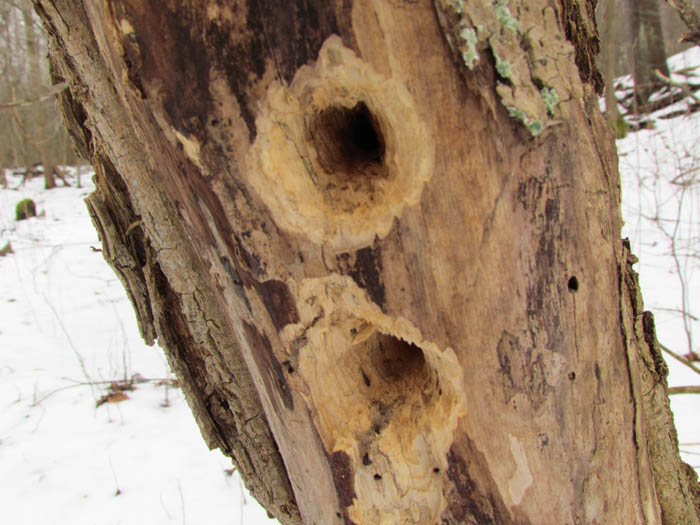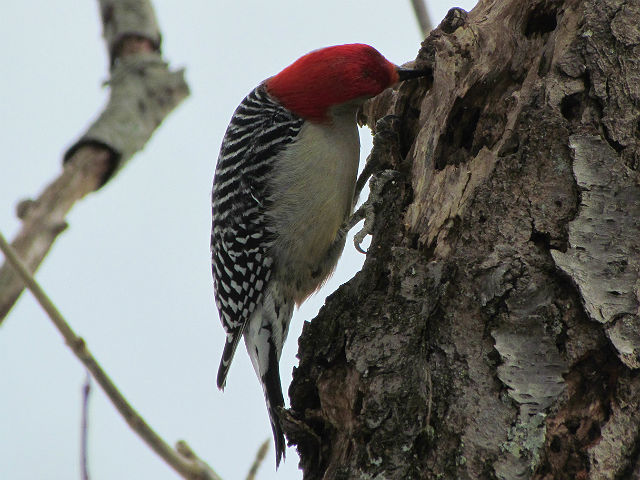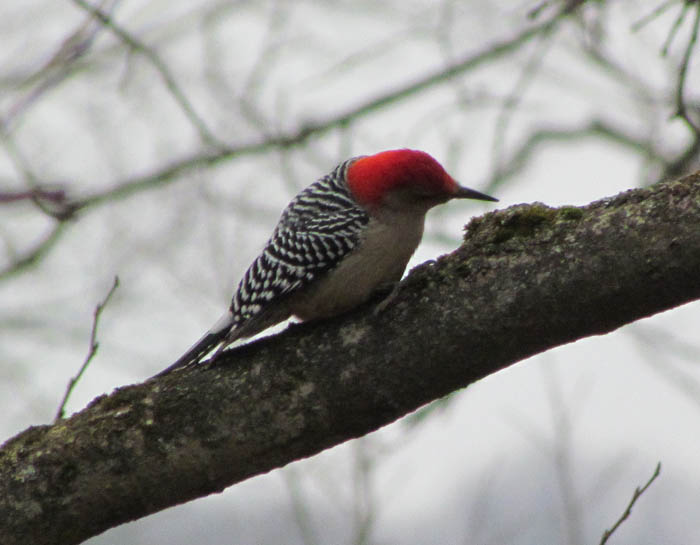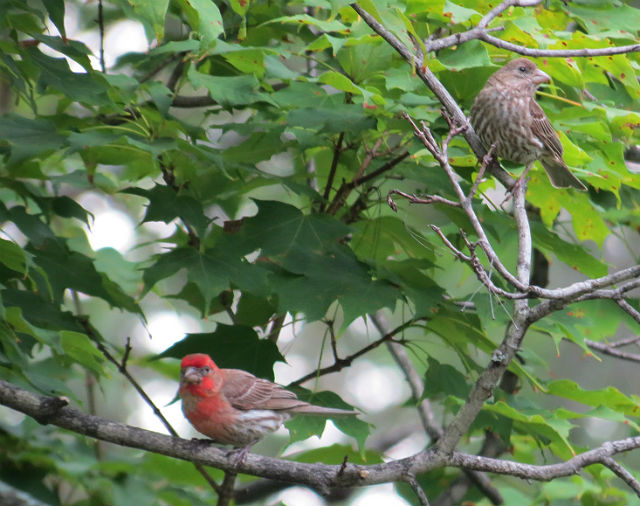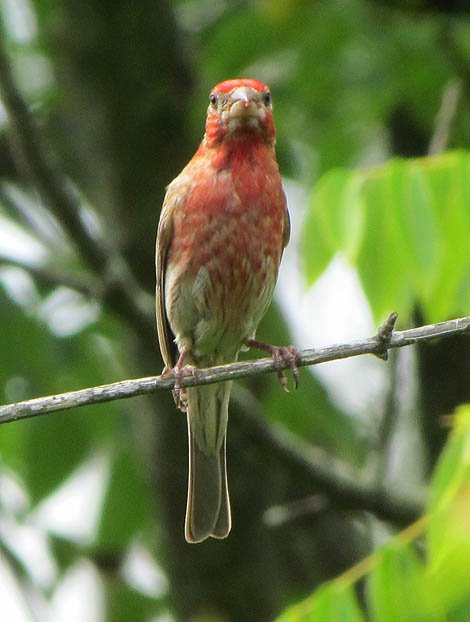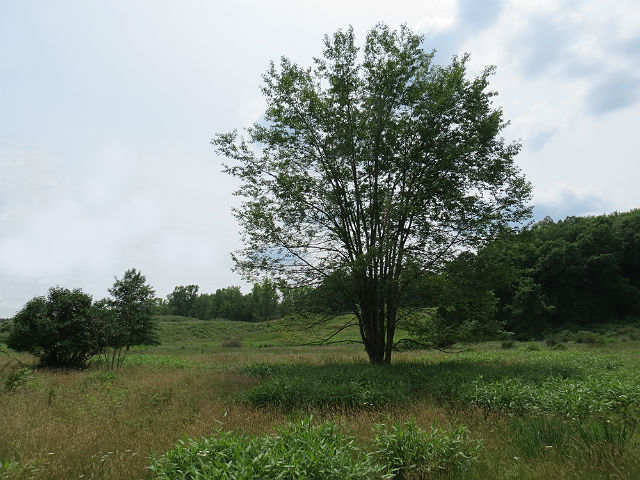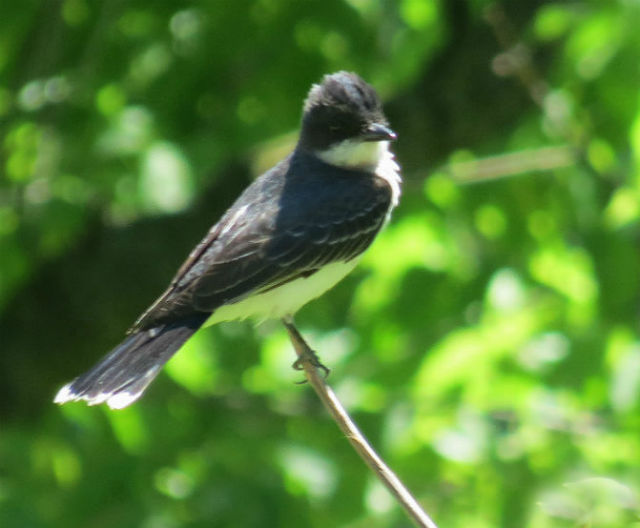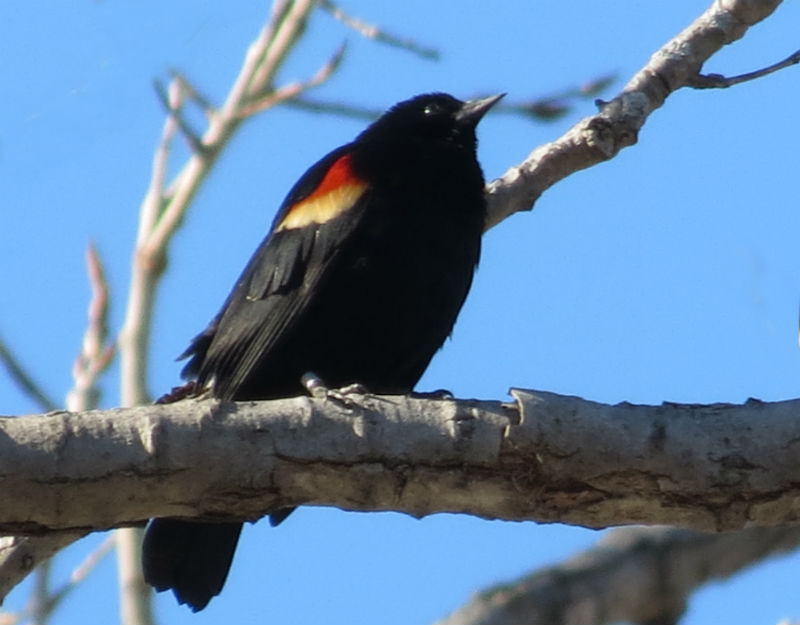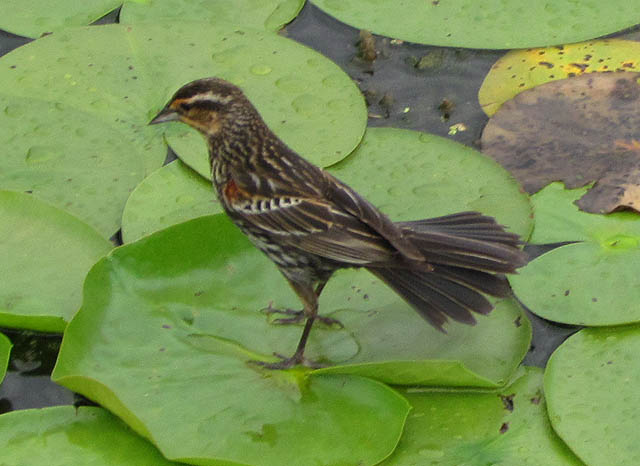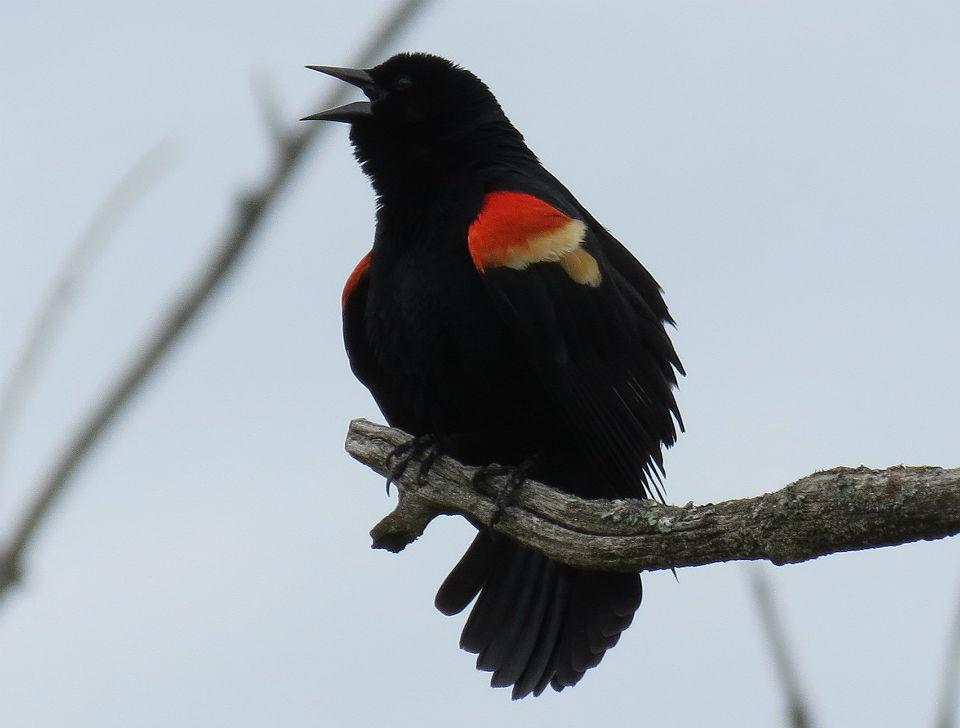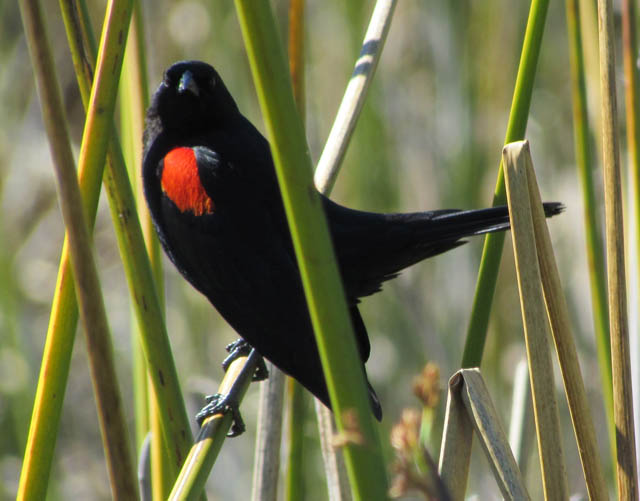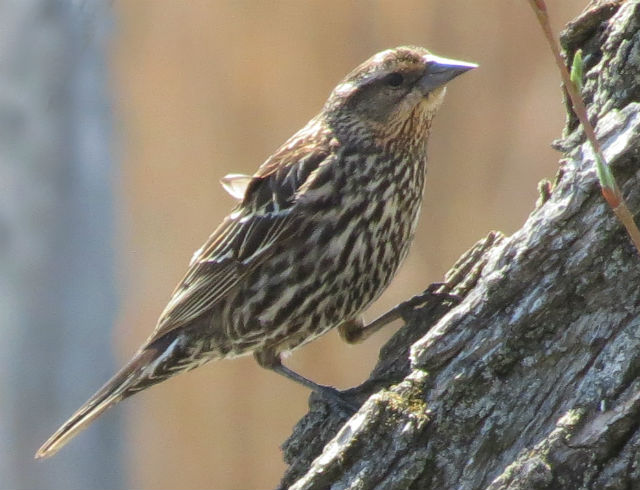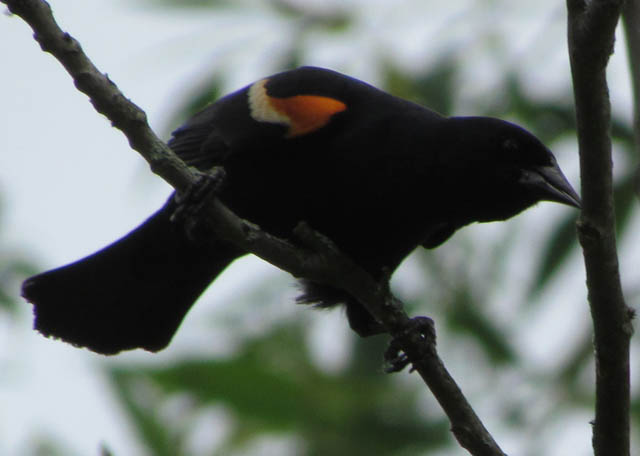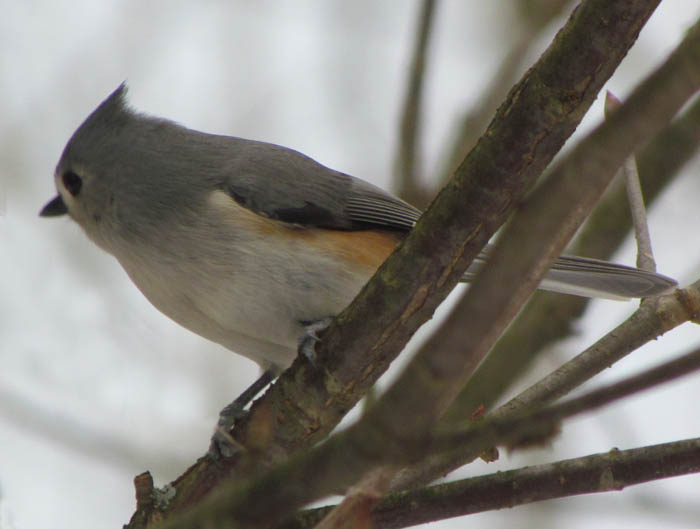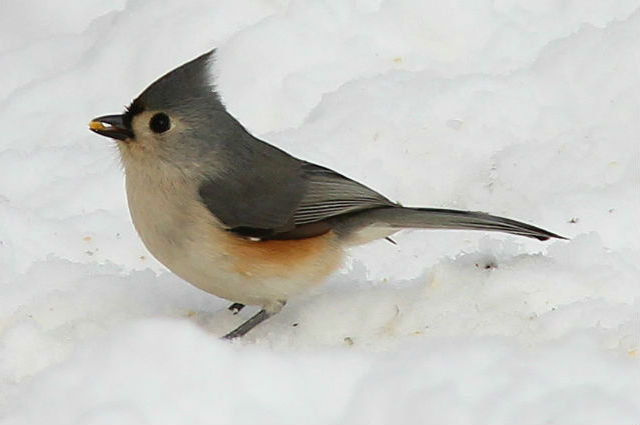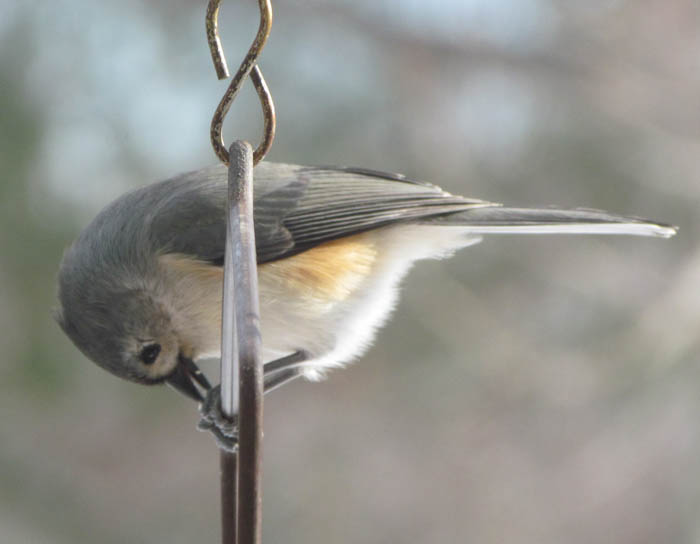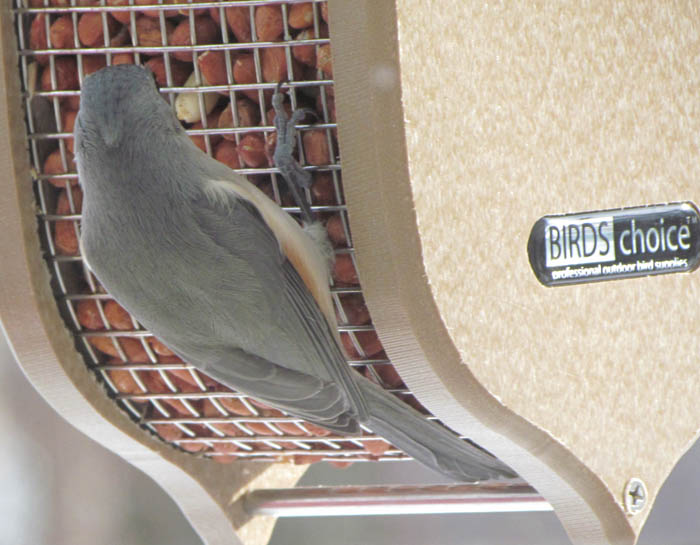This bird is easy to identify by watching its behavior; it has the odd habit of creeping down tree trunks headfirst. All other species of bark-foraging birds search for food by climbing trees upwards. This gives the White-breasted Nuthatch a distinct advantage, allowing it the visual perspective of finding prey that other birds may miss.
This is a stocky bird, with a large head, virtually no neck, a short tail, powerful bill and strong feet. The upperparts are pale blue-gray, and the face and underparts are white. The species has a black crown and nape that contrast with a white face and breast.
It’s common name stems from its habit of cramming nuts and acorns into tree bark and then hammering away at them with their sharp bill, until the nut splits to “hatch” out the seed inside.
They store a variety of seeds and nuts in bark crevices, returning later to eat their stockpile of food. These birds are also frequent visitors to backyard feeders.
White-breasted Nuthatches reside in mature woods and woodland edges. They’re particularly associated with deciduous forests, consisting of Maple, Hickory, Basswood and Oak.
It’s call of Yenk-yenk-yenk-yenk sounds like a small nasal voice – or like a bath toy rapidly squeezed.
At this time of year I often see them in Brecksville Reservation in small flocks of Black-capped Chickadees and Tufted Titmice. One explanation for these flocks is that the birds gain protection from predators by the vigilance of the other birds.
A group of nuthatches are collectively known as a “jar” of nuthatches.

